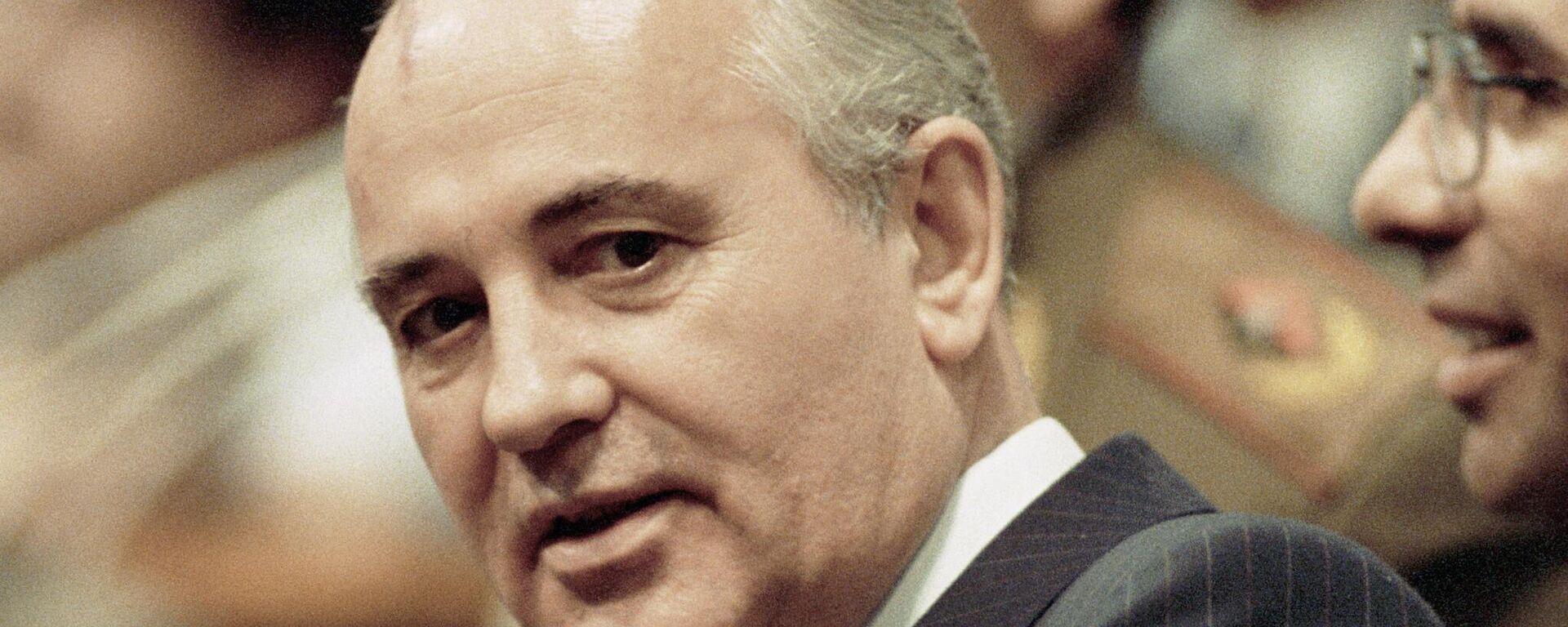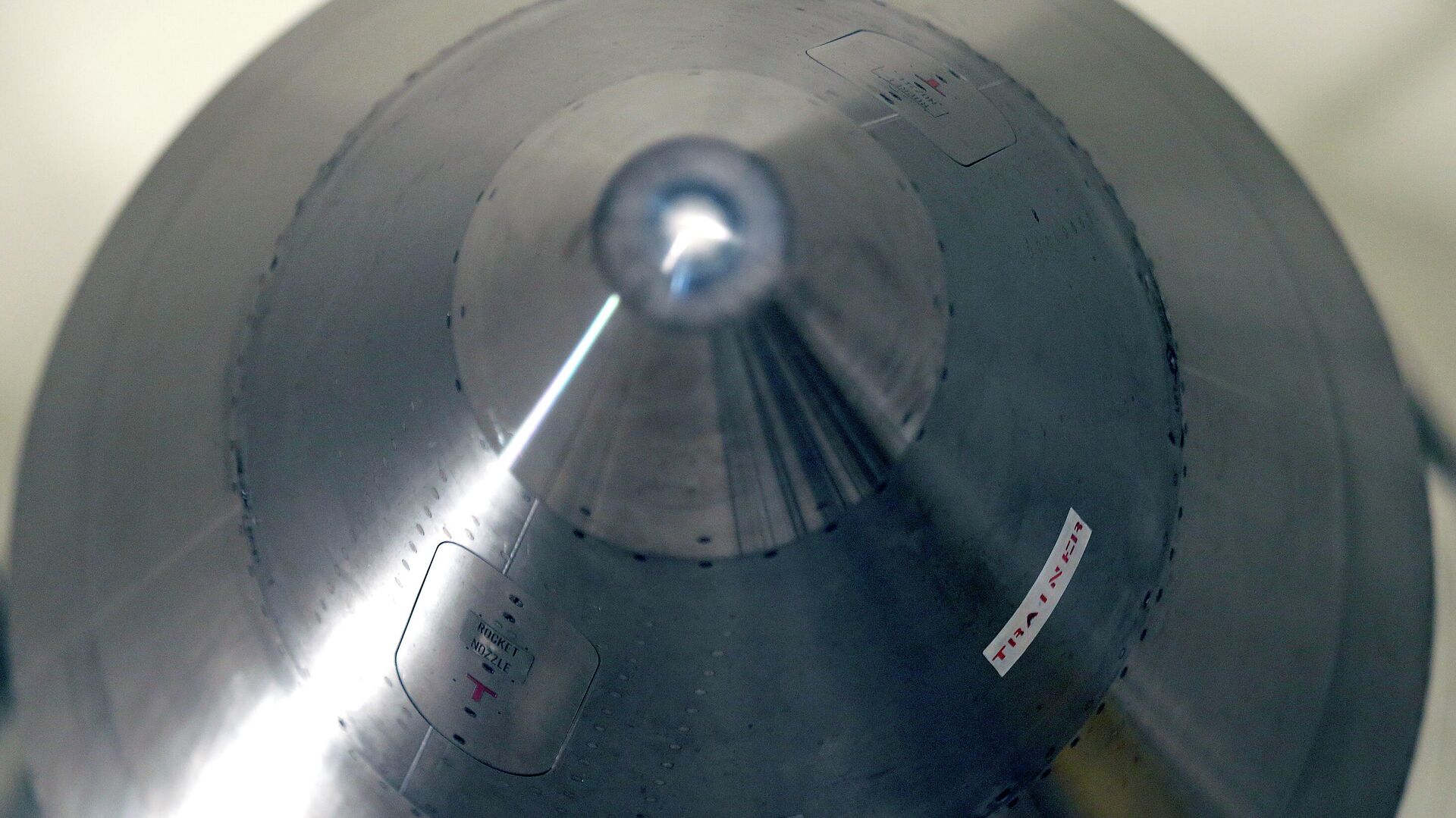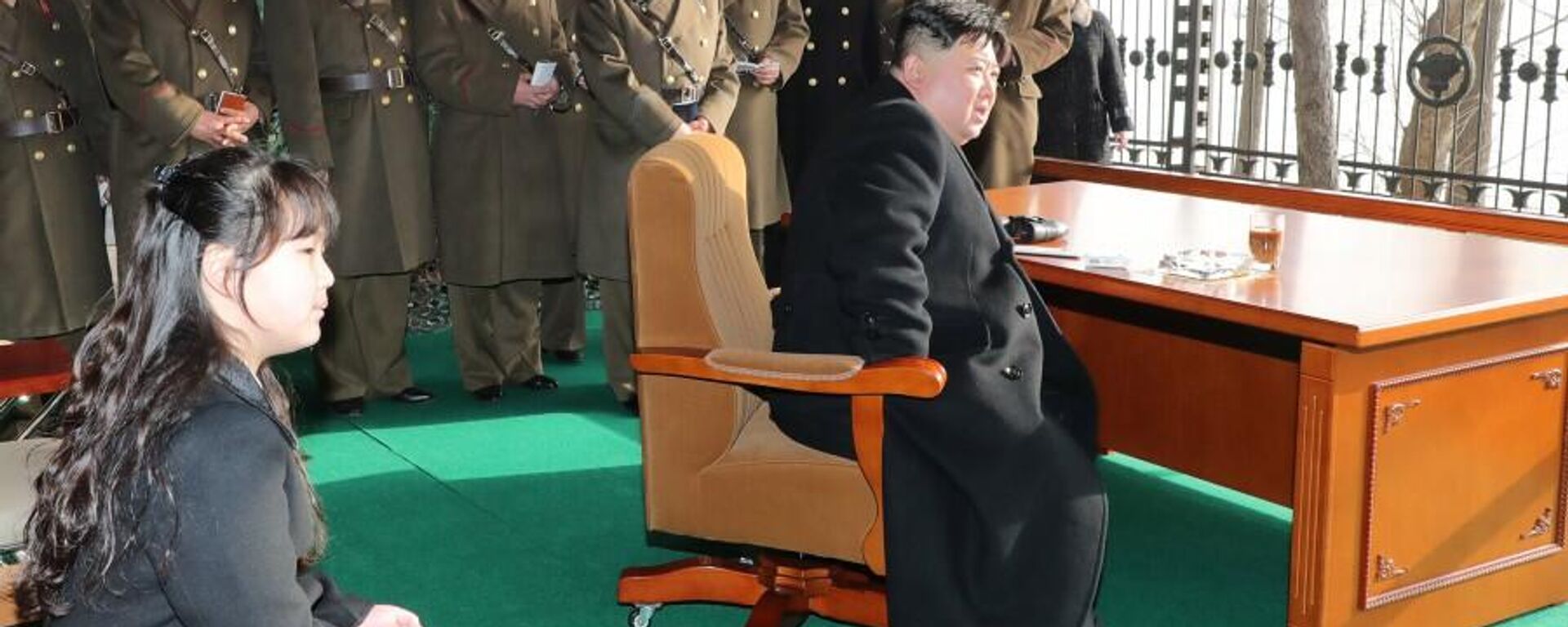https://sputnikglobe.com/20230421/nuclear-missile-buildup-by-us-allies-aimed-at-achieving-global-superiority-over-russia-prc-moscow-1109743034.html
Missile Buildup by US, Allies Aimed at Achieving Global Superiority Over Russia, China - Moscow
Missile Buildup by US, Allies Aimed at Achieving Global Superiority Over Russia, China - Moscow
Sputnik International
Russia suspended its participation in the New Strategic Arms Reduction Treaty in late February in the wake of Ukrainian drone attacks on an airbase used by... 21.04.2023, Sputnik International
2023-04-21T14:45+0000
2023-04-21T14:45+0000
2023-04-21T16:24+0000
missile
military
nuclear
nuclear weapons
missile
ballistic missile
https://cdn1.img.sputnikglobe.com/img/07e5/0c/12/1091632234_0:202:2925:1847_1920x0_80_0_0_83fc64a7a2b42d7cdbbc78e996e40420.jpg
The global arms race, including in the area of strategic missile weaponry, is spinning out of control, with the US and its allies seeking to achieve superiority over Russia and China, Russian Foreign Ministry Ambassador-at-Large Grigory Mashkov has said.Mashkov, the former chairman of the Missile Technology Control Regime, a multilateral grouping of nations seeking to limit the proliferation of missiles and missile technology, warned in a Friday interview with Russian media that in today's world, "in essence, we are witnessing a missile arms race with consequences that are very difficult to predict.""Tens of billions of dollars are being invested in improving missile technologies. This process is becoming uncontrollable," the diplomat said."Strategic offensive weapons are being modernized at a rapid pace. The People's Republic of China is actively building up its missile capabilities. The Democratic People's Republic of Korea has recently broken into the club of ICBM powers. The 'threshold' countries - Israel, India, Pakistan - have not abandoned the idea of creating missiles with a range beyond 5,500 km," Mashkov said.According to the strategic weapons specialist, Moscow needs to be prepared for "any scenarios" after the expiration of the New START Treaty in 2026, including the possibility that a new agreement is not reached to replace it. "It cannot be ruled out that after the expiration of the New START Treaty in February 2026, a vacuum could form over the long term when it comes to international legal instruments designed to maintain stability."On top of that, Mashkov said, given the security challenges Russia is facing, Moscow has an obvious need to build up its missile potential, including tactical and intermediate-range weapons. The diplomat pointed out that in the wake of the US decision to rip up the Intermediate-Range Nuclear Forces Treaty (INF) in 2019, a logical question arose about "how far we have fallen behind other countries which possess this type of weapon over the 30 years of our participation in the treaty, and what needs to be done first and foremost to eliminate the imbalance that exists here.""There is an obvious need for Russia to build up its tactical missile potential and further increase the effectiveness of its use and stockpiling of missile weaponry in order to effectively respond to any challenges to national security, including in Kaliningrad, where NATO has set out to threaten Russian territory using American MLRS weapons," Mashkov added.The diplomat also warned that Moscow may have to rethink its voluntary commitment not to be the first to deploy medium and long-range missiles in western Russia, given the potential challenges to the country's strategic security by the US and NATO. Russia, he noted, is also forced to "remain vigilant" on its eastern frontiers, given that it cannot be ruled out that the West will try to draw Russia into new conflicts against its will."Another area where questions arise relates to tactical missile systems, their preemptive and reactive potential for solving problems on the battlefield," Mashkov said. "Therefore, it's important to understand what kinds of threats are forming in this direction, how to counter them, as well as what we expect from our international partners in this regard, what kinds of compromises they may be prepared to make. It's important to approach this not only from the perspective of resolving the current problems in Ukraine, but also ensuring long-term national security in the post-conflict period," the diplomat said.The past two decades have witnessed the dismantling of almost the entirety of the post-Cold War security architecture. In 2002, the Bush administration unilaterally scrapped the Anti-Ballistic Missile Treaty - a major weapons agreement restricting the number and types of anti-missile missile defenses the nuclear superpowers could develop. In 2019, the Trump administration pulled out of the Intermediate-Range Nuclear Forces Treaty, which prohibited the creation of ground-based nuclear-capable missile systems in the 500-5,500 km range. In 2020, the US pulled out of the Treaty on Open Skies - a major post-Cold War agreement with Russia and nearly three dozen other countries which provided for military aerial surveillance flights over treaty party nations, and designed to facilitate confidence in one another's peaceful intentions. All of this proceeded as NATO engaged in an eastward expansion, swallowing up every former member of the former Warsaw Pact, plus over half a dozen members of the former Soviet Union and Yugoslavia, and setting its sights on expanding into Ukraine and Georgia, which Moscow warned constituted its "red lines."Earlier this year, Russia suspended its participation in the New Strategic Arms Reduction Treaty (but committed to continue to abide by its limitations on missiles and nuclear weapons), citing Washington's creation of new strategic weapons, as well as attacks by America's client state - Kiev, on a base hosting elements of the aerial prong of Russia's strategic nuclear deterrent. Biden Secretary of State Antony Blinken called Moscow's decision "really unfortunate and very irresponsible."
https://sputnikglobe.com/20230419/north-korea-to-launch-military-satellite-to-target-enemies-with-nuclear-missiles-1109662899.html
https://sputnikglobe.com/20230404/russia-transferred-iskander-missile-system-to-belarusian-armed-forces-shoigu-1109111035.html
https://sputnikglobe.com/20220831/gorbachev-was-promised-non-expansion-of-nato-his-mistake-was-to-believe-it-ex-us-official-says-1100199807.html
Sputnik International
feedback@sputniknews.com
+74956456601
MIA „Rossiya Segodnya“
2023
News
en_EN
Sputnik International
feedback@sputniknews.com
+74956456601
MIA „Rossiya Segodnya“
Sputnik International
feedback@sputniknews.com
+74956456601
MIA „Rossiya Segodnya“
missile, nuclear, nuclear weapons, missile, ballistic missile
missile, nuclear, nuclear weapons, missile, ballistic missile
Missile Buildup by US, Allies Aimed at Achieving Global Superiority Over Russia, China - Moscow
14:45 GMT 21.04.2023 (Updated: 16:24 GMT 21.04.2023) Russia suspended its participation in the New Strategic Arms Reduction Treaty in late February in the wake of Ukrainian drone attacks on an airbase used by Russian strategic aviation. Before that, Washington unilaterally scrapped multiple agreements designed to ensure strategic stability, including the ABM and INF treaties.
The global arms race, including in the area of strategic missile weaponry, is spinning out of control, with the US and its allies seeking to achieve superiority over Russia and China, Russian Foreign Ministry Ambassador-at-Large Grigory Mashkov has said.
Mashkov, the former chairman of the Missile Technology Control Regime, a multilateral grouping of nations seeking to limit the proliferation of missiles and missile technology, warned in a Friday interview with Russian media that in today's world, "in essence, we are witnessing a missile arms race with consequences that are very difficult to predict."
"Tens of billions of dollars are being invested in improving missile technologies. This process is becoming uncontrollable," the diplomat said.
At the same time, he noted, efforts are being made by some states to redistribute the strategic balance of power related to intercontinental ballistic missiles. "The buildup of weapons, primarily missiles, by the United States and its allies is aimed at achieving global superiority over potential rivals - China and Russia. Two vectors of a long-term military confrontation with a consolidated Western world have already clearly emerged - the European and the Asian," Mashkov said.
"Strategic offensive weapons are being modernized at a rapid pace. The People's Republic of China is actively building up its missile capabilities. The Democratic People's Republic of Korea has recently broken into the club of ICBM powers. The 'threshold' countries - Israel, India, Pakistan - have not abandoned the idea of creating missiles with a range beyond 5,500 km," Mashkov said.
According to the strategic weapons specialist, Moscow needs to be prepared for "any scenarios" after the expiration of the New START Treaty in 2026, including the possibility that a new agreement is not reached to replace it. "It cannot be ruled out that after the expiration of the New START Treaty in February 2026, a vacuum could form over the long term when it comes to international legal instruments designed to maintain stability."
On top of that, Mashkov said, given the security challenges Russia is facing, Moscow has an obvious need to build up its missile potential, including tactical and intermediate-range weapons. The diplomat pointed out that in the wake of the US decision to rip up the Intermediate-Range Nuclear Forces Treaty (INF) in 2019, a logical question arose about "how far we have fallen behind other countries which possess this type of weapon over the 30 years of our participation in the treaty, and what needs to be done first and foremost to eliminate the imbalance that exists here."
"There is an obvious need for Russia to build up its tactical missile potential and further increase the effectiveness of its use and stockpiling of missile weaponry in order to effectively respond to any challenges to national security, including in Kaliningrad, where NATO has set out to threaten Russian territory using American MLRS weapons," Mashkov added.
The diplomat also warned that Moscow may have to rethink its voluntary commitment not to be the first to deploy medium and long-range missiles in western Russia, given the potential challenges to the country's strategic security by the US and NATO. Russia, he noted, is also forced to "remain vigilant" on its eastern frontiers, given that it cannot be ruled out that the West will try to draw Russia into new conflicts against its will.
"Another area where questions arise relates to tactical missile systems, their preemptive and reactive potential for solving problems on the battlefield," Mashkov said. "Therefore, it's important to understand what kinds of threats are forming in this direction, how to counter them, as well as what we expect from our international partners in this regard, what kinds of compromises they may be prepared to make. It's important to approach this not only from the perspective of resolving the current problems in Ukraine, but also ensuring long-term national security in the post-conflict period," the diplomat said.
The past two decades have witnessed the dismantling of almost the entirety of the post-Cold War security architecture. In 2002, the Bush administration unilaterally scrapped the Anti-Ballistic Missile Treaty - a major weapons agreement restricting the number and types of anti-missile missile defenses the nuclear superpowers could develop. In 2019, the Trump administration pulled out of the Intermediate-Range Nuclear Forces Treaty, which prohibited the creation of ground-based nuclear-capable missile systems in the 500-5,500 km range. In 2020, the US pulled out of the Treaty on Open Skies - a major post-Cold War agreement with Russia and nearly three dozen other countries which provided for military aerial surveillance flights over treaty party nations, and designed to facilitate confidence in one another's peaceful intentions. All of this proceeded as NATO engaged in an eastward expansion, swallowing up every former member of the former Warsaw Pact, plus over half a dozen members of the former Soviet Union and Yugoslavia, and setting its sights on expanding into Ukraine and Georgia, which Moscow warned constituted its "red lines."

31 August 2022, 01:22 GMT
Earlier this year, Russia suspended its participation in the New Strategic Arms Reduction Treaty (but committed to continue to abide by its limitations on missiles and nuclear weapons), citing Washington's creation of new strategic weapons, as well as attacks by America's client state - Kiev, on a base hosting elements of the aerial prong of Russia's strategic nuclear deterrent. Biden Secretary of State Antony Blinken called Moscow's decision "really unfortunate and very irresponsible."





